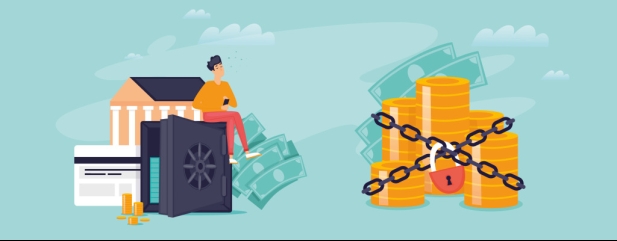Archived article
Please note that tax, investment, pension and ISA rules can change and the information and any views contained in this article may now be inaccurate.
Is it time to ditch that fixed-rate savings account?

Interest rates on savings accounts have soared in the past few months, since the Bank of England started hiking the base rate. In particular fixed-rate accounts, where your money is tied up for a period of time in return for higher interest rates, have risen dramatically.
Data from Moneyfacts shows that the top one-year bond in October last year was paying 1.51%, while today it is paying 4.5%, an increase of three percentage points in the space of a year. On two-year bonds the rate has risen from 1.76% last October to 4.95% today.
For people who locked in a one-year bond a year ago, it will be welcome news that their savings can now get a far higher return, assuming they want to pick a fixed-rate account again. Someone with £15,000 in savings would have got £226.50 interest over the past year, assuming they’d locked in the top rate last October. However, if they sign up to the current top rate one-year deal they’ll make £675 in interest over the next year on that same £15,000 – three times the level of interest they saw a year earlier.
However, anyone who tied up their money for longer this time last year will be frustrated that they are locked into a lower rate and can’t benefit from the rate increases. One option might be to break their fixed rate account and sign up again at a new rate.
CAN YOU BREAK YOUR FIX?
The first step is to check whether you account allows this at all – some have a total ban on withdrawals, while others will let you take out money if you sacrifice some interest. The most common penalty is sacrificing 90 days’ of interest in order to get your cash out. Considering rates have risen so dramatically, that might be penalty worth taking. Let’s look at some figures.
If you put £10,000 into a two-year fix in October last year at 1.76% you’d make £355.10 in total interest when the account matures after the two-year period in October 2023. If you broke that deal after one year, assuming you had to sacrifice 90 days’ interest to do so, you’d pay a penalty of £43.40. However, by locking into the far higher rates today the additional interest you’d generate would more than counteract the penalty you’d paid.
In October 2023, when the original account would have matured, your savings pot would be worth £10,634 – almost £300 more, even after paying the penalty.
But what about a five-year account? Those rates have gone from 2.05% last October to 5.1% today. If you saved £10,000 and broke the deal after a year you’d pay a £50.55 penalty, but at the end of the original five-year term you’d have £1,322 more in your savings account if you’d switched to the new account than if you had stuck with the original account.
When is the best time to fix?
Before they rush to lock in a deal, savers need to think carefully about whether it’s the right move.
With a fixed-rate account you have to think about what interest rates will do during the period of your fixed term, whether that’s one, two, three or five years. No one has a crystal ball, but at the moment it looks likely that interest rates are going to rise this year and into next year. If you lock in a fixed rate deal today, that means you miss out on these potential future increases.
Savers might decide to park their money in the top-paying easy-access savings account for a few months before opting for a fixed-rate deal. However, there is no right answer, some savers might prefer the certainty of getting a decent deal today rather than waiting it out and risking rates not rising by as much as expected. Another option for savers is to split their money and hedge their bets: Fix half at today’s rates and leave the rest in an easy-access account so they can fix early next year, when rates may have risen further.
Two absolute essentials for anyone who decides to delay fixing their rate is to ensure that in the meantime it’s earning as much interest as possible, rather than earning nothing in their current account. Next is to set a reminder to fix your account. There’s no point waiting it out for a better rate, only to forget to do so and miss the boat entirely.
DISCLAIMER: Financial services company AJ Bell referenced in this article owns Shares magazine. The author of this article (Laura Suter) and the editor (Tom Sieber) own shares in AJ Bell.
Important information:
These articles are provided by Shares magazine which is published by AJ Bell Media, a part of AJ Bell. Shares is not written by AJ Bell.
Shares is provided for your general information and use and is not a personal recommendation to invest. It is not intended to be relied upon by you in making or not making any investment decisions. The investments referred to in these articles will not be suitable for all investors. If in doubt please seek appropriate independent financial advice.
Investors acting on the information in these articles do so at their own risk and AJ Bell Media and its staff do not accept liability for losses suffered by investors as a result of their investment decisions.
Issue contents
Editor's View
Feature
Great Ideas
News
- Investors turn wary eye to Marks & Spencer and Primark-owner
- US inflation remains sticky, but some there are signs it could be peaking
- Halfords investors rejoice as the retailer’s share price finally starts to recover
- Why shares in On The Beach remain down in the dumps
- RELX and CentralNic stand out in latest batch of earnings upgrades and downgrades
- Lula stages remarkable political comeback to lead Brazil for a third term

 magazine
magazine








